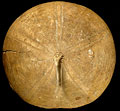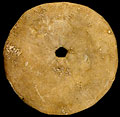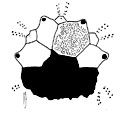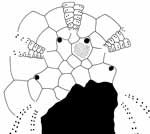The Echinoid Directory
Galeropygus Cotteau, 1856, p.648
[=Antropygus Ébray, 1859, p. 759 (nomen vanum); =Centropygus Ébray, 1858, p. 483; type species Antropygus guetinicus Ébray, 1859; =Centroclypus Ébray, 1858, p. 483 (nomen vanum); =Ressopygus Pomel, 1883, p. 56; type species Clypeus constantini Cotteau, 1871; = Galeopygus Desor, 1857 (nomen vanum) ]
| Diagnostic Features |
|
|---|---|
| Distribution | Lower to Middle Jurassic (Toarcian - Bajocian), western Europe. |
| Name gender | masculine |
| Type | Hyboclypus agariciformis Wright, 1852, p. 99 [=Pygaster sublaevis M\'Coy, 1848, p. 413] by original designation. |
| Species Included |
|
| Classification and/or Status |
|
| Remarks |
|






